
PS-2020a / part08
.pdf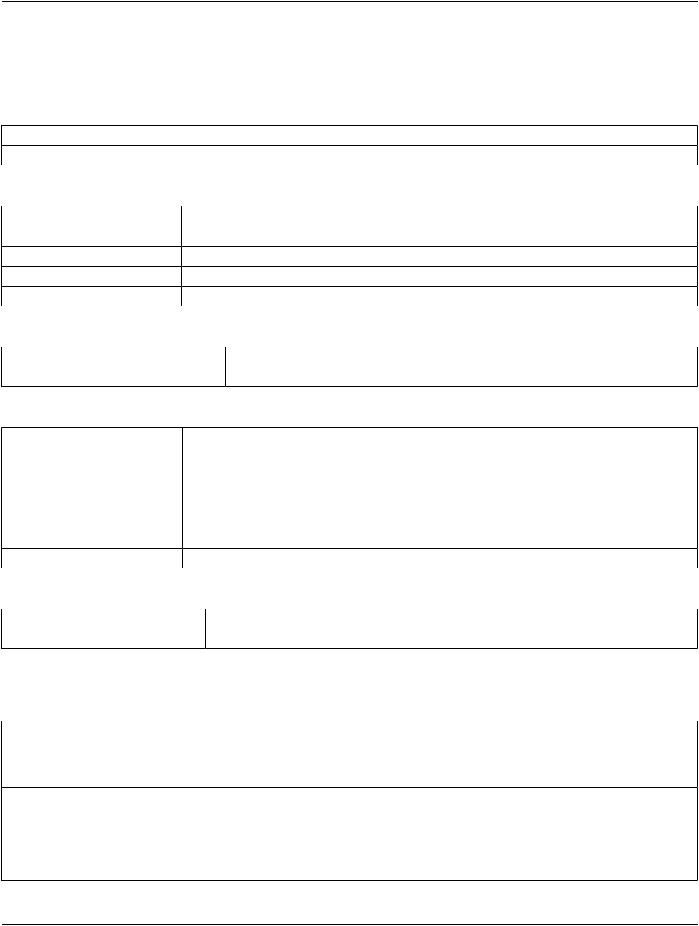
DICOM PS3.8 2020a - Network Communication Support for Message Exchange |
Page 41 |
9.2 DICOM Upper Layer Protocol for TCP/IP State Machine
9.2.1 Machine States Definition
|
Table 9-1. No Association |
|
|
State |
Definition |
Sta 1 |
Idle |
|
|
Table 9-2. Association Establishment |
|
State |
Definition |
|
Sta 2 |
Transport connection open (Awaiting A-ASSOCIATE-RQ PDU) |
|
Sta 3 |
Awaiting local A-ASSOCIATE response primitive (from local user) |
|
Sta 4 |
Awaiting transport connection opening to complete (from local transport service) |
|
Sta 5 |
Awaiting A-ASSOCIATE-AC or A-ASSOCIATE-RJ PDU |
|
|
Table 9-3. Data Transfer |
|
State |
Definition |
|
Sta 6 |
Association established and ready for data transfer |
|
|
Table 9-4. Association Release |
|
State |
Definition |
|
Sta 7 |
Awaiting A-RELEASE-RP PDU |
|
Sta 8 |
Awaiting local A-RELEASE response primitive (from local user) |
|
Sta 9 |
Release collision requestor side; awaiting A-RELEASE response (from local user) |
|
Sta 10 |
Release collision acceptor side; awaiting A-RELEASE-RP PDU |
|
Sta 11 |
Release collision requestor side; awaiting A-RELEASE-RP PDU |
|
Sta 12 |
Release collision acceptor side; awaiting A-RELEASE response primitive (from local user) |
|
|
Table 9-5. Waiting for Transport Connection Close |
|
State |
Definition |
|
Sta 13 |
Awaiting Transport Connection Close Indication (Association no longer exists) |
|
9.2.2 State Machine Actions Definition |
|
|
|
Table 9-6. Association Establishment Related Actions |
|
Action |
Definition |
|
AE-1 |
Issue TRANSPORT CONNECT request primitive to local transport service |
|
|
Next state is Sta4 |
|
AE-2 |
Send A-ASSOCIATE-RQ-PDU |
|
|
Next state is Sta5 |
|
AE-3 |
Issue A-ASSOCIATE confirmation (accept) primitive |
|
|
Next state is Sta6 |
|
- Standard -
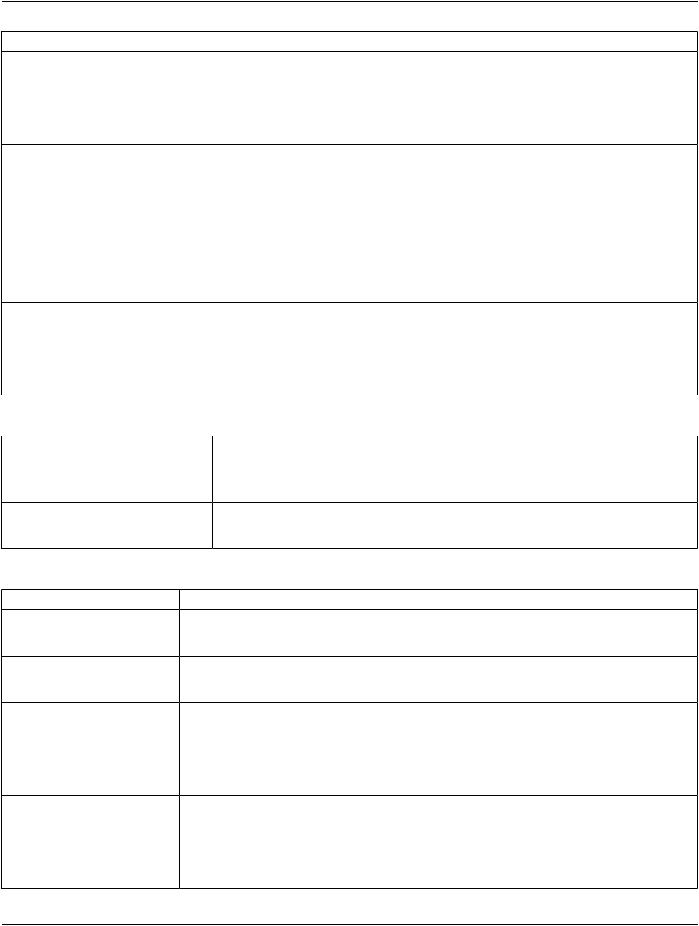
Page 42 |
DICOM PS3.8 2020a - Network Communication Support for Message Exchange |
Action |
Definition |
AE-4 |
Issue A-ASSOCIATE confirmation (reject) primitive and close transport connection |
|
Next state is Sta1 |
AE-5 |
Issue Transport connection response primitive; start ARTIM timer |
|
Next state is Sta2 |
AE-6 |
Stop ARTIM timer and if A-ASSOCIATE-RQ acceptable by service-provider: |
|
•issue A-ASSOCIATE indication primitive |
|
Next state is Sta3 |
|
otherwise: |
|
•issue A-ASSOCIATE-RJ-PDU and start ARTIM timer |
|
Next state is Sta13 |
AE-7 |
Send A-ASSOCIATE-AC PDU |
|
Next state is Sta6 |
AE-8 |
Send A-ASSOCIATE-RJ PDU and start ARTIM timer |
|
Next state is STA13 |
|
Table 9-7. Data Transfer Related Actions |
State |
Definition |
DT-1 |
Send P-DATA-TF PDU |
|
Next state is Sta6 |
DT-2 |
Send P-DATA indication primitive |
|
Next state is Sta6 |
|
Table 9-8. Association Release Related Actions |
Action |
Definition |
AR-1 |
Send A-RELEASE-RQ PDU |
|
Next state is Sta7 |
AR-2 |
Issue A-RELEASE indication primitive |
|
Next state is Sta8 |
AR-3 |
Issue A-RELEASE confirmation primitive, and close transport connection |
|
Next state is Sta1 |
AR-4 |
Issue A-RELEASE-RP PDU and start ARTIM timer |
|
Next state is Sta13 |
AR-5 |
Stop ARTIM timer |
|
Next state is Sta1 |
AR-6 |
Issue P-DATA indication |
|
Next state is Sta7 |
- Standard -

|
DICOM PS3.8 2020a - Network Communication Support for Message Exchange |
Page 43 |
Action |
Definition |
|
AR-7 |
Issue P-DATA-TF PDU |
|
|
Next state is Sta8 |
|
AR-8 |
Issue A-RELEASE indication (release collision): |
|
|
•if association-requestor, next state is Sta9 |
|
|
•if not, next state is Sta10 |
|
AR-9 |
Send A-RELEASE-RP PDU |
|
|
Next state is Sta11 |
|
AR-10 |
Issue A-RELEASE confirmation primitive |
|
|
Next state is Sta12 |
|
|
Table 9-9. Association Abort Related Actions |
|
Action |
Definition |
|
AA-1 |
Send A-ABORT PDU (service-user source) and start (or restart if already started) ARTIM timer |
|
|
Next state is Sta13 |
|
AA-2 |
Stop ARTIM timer if running. Close transport connection |
|
|
Next state is Sta1 |
|
AA-3 |
If (service-user inititated abort): |
|
|
•issue A-ABORT indication and close transport connection |
|
otherwise (service-provider inititated abort): |
|
•issue A-P-ABORT indication and close transport connection |
|
Next state is Sta1 |
AA-4 |
Issue A-P-ABORT indication primitive |
|
Next state is Sta1 |
AA-5 |
Stop ARTIM timer |
|
Next state is Sta1 |
AA-6 |
Ignore PDU |
|
Next state is Sta13 |
AA-7 |
Send A-ABORT PDU |
|
Next state is Sta13 |
AA-8 |
Send A-ABORT PDU (service-provider source-), issue an A-P-ABORT indication, and start ARTIM |
|
timer |
|
Next state is Sta13 |
9.2.3 DICOM Upper Layer Protocol for TCP/IP State Transition Table
The DICOM Upper Layer Protocol State transitions are specified in Table 9-10. This table addresses both the normal and error cases for the protocol operation. Both the called and the calling aspects of an association are described in this table.
- Standard -
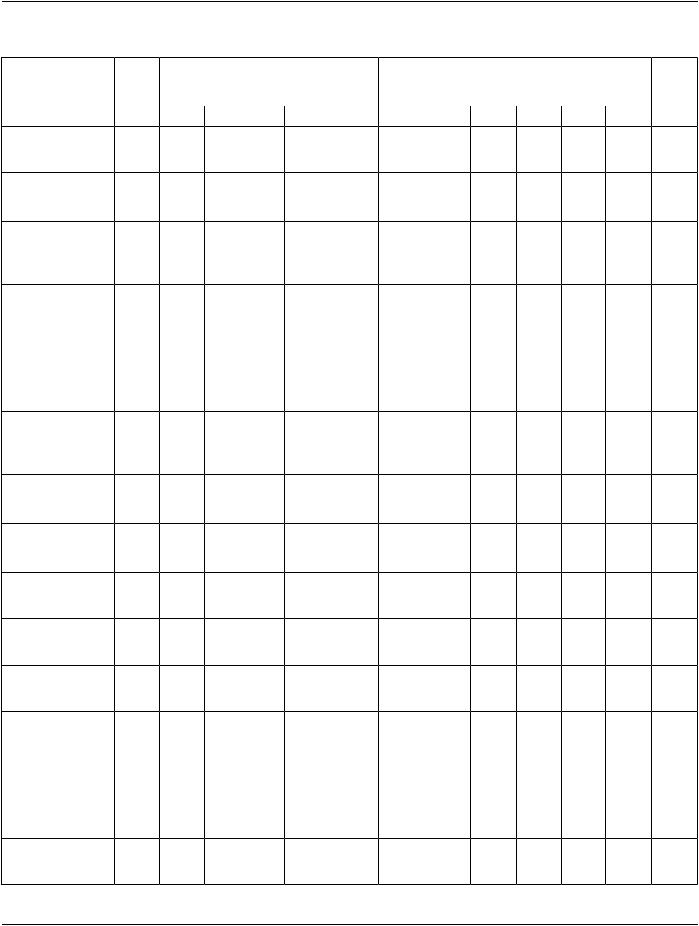
Page 44 DICOM PS3.8 2020a - Network Communication Support for Message Exchange
Table 9-10. DICOM Upper Layer Protocol State Transition Table
STATES |
No Association establishment |
Data |
Association release (normal & collision) Wait |
||
assocn |
transfer |
for Tp |
|||
|
|
|
|
|
Close |
EVENTS |
Sta1 Sta2 Sta3 Sta4Sta5 |
Sta6 |
Sta7 Sta8 Sta9 Sta10Sta11Sta12Sta13 |
||
A-ASSOCIATE AE-1 |
|
|
|
|
|
Request (local user) |
Sta4 |
|
|
|
|
|
|
|
|
|
|
Transport Conn. |
AE-2 |
|
|
|
|
Confirmn (local |
|
Sta5 |
|
|
|
transport service) |
|
|
|
|
|
A-ASSOCIATE-AC |
AA-1 AA-8 |
AE-3 |
AA-8 |
AA-8 AA-8 AA-8 AA-8 AA-8 AA-8 AA-6 |
|
PDU (received on |
Sta13 Sta13 |
Sta6 Sta13 Sta13 Sta13 Sta13Sta13Sta13Sta13 Sta13 |
|||
transport |
|||||
connection) |
|
|
|
|
|
A-ASSOCIATE-RJ |
AA-1 AA-8 |
AE-4 |
AA-8 |
AA-8 AA-8 AA-8 AA-8 AA-8 AA-8 AA-6 |
|
PDU (received on |
Sta13 Sta13 |
Sta1 Sta13 Sta13 Sta13 Sta13Sta13Sta13Sta13 Sta13 |
|||
transport |
|||||
connection) |
|
|
|
|
|
Transport |
AE-5 |
|
|
|
|
Connection |
Sta2 |
|
|
|
|
Indication (local |
|
|
|
|
|
transport service) |
|
|
|
|
|
A-ASSOCIATE-RQ |
AE-6 AA-8 |
AA-8 |
AA-8 |
AA-8 AA-8 AA-8 AA-8 AA-8 AA-8 AA-7 |
|
PDU (received on |
Sta3 orSta13 |
Sta13 Sta13 Sta13 Sta13 Sta13Sta13Sta13Sta13 Sta13 |
|||
transport |
|||||
connection) |
13 |
|
|
|
|
A-ASSOCIATE |
AE-7 |
|
|
|
|
response primitive |
Sta6 |
|
|
|
|
(accept) |
|
|
|
|
|
A-ASSOCIATE |
AE-8 |
|
|
|
|
response primitive |
Sta13 |
|
|
|
|
(reject) |
|
|
|
|
|
P-DATA request |
|
|
DT-1 |
AR-7 |
|
primitive |
|
|
Sta6 |
Sta8 |
|
|
|
|
|
||
P-DATA-TF PDU |
AA-1 AA-8 |
AA-8 DT-2 AR-6 AA-8 AA-8 AA-8 AA-8 AA-8 AA-6 |
|||
|
Sta13 Sta13 |
Sta13 Sta6 |
Sta7 Sta13 Sta13Sta13Sta13Sta13 Sta13 |
||
A-RELEASE |
|
|
AR-1 |
|
|
Request primitive |
|
|
Sta7 |
|
|
|
|
|
|
|
|
A-RELEASE-RQ |
AA-1 AA-8 |
AA-8 AR-2 AR-8 AA-8 AA-8 AA-8 AA-8 AA-8 AA-6 |
|||
PDU (received on |
Sta13 Sta13 |
Sta13 Sta8 Sta9 orSta13 Sta13Sta13Sta13Sta13 Sta13 |
|||
open transport |
|||||
connection) |
|
|
|
10 |
|
A-RELEASE-RP |
AA-1 AA-8 |
AA-8 AA-8 |
AR-3 AA-8 AA-8 AR-10AR-3 AA-8 AA-6 |
||
PDU (received on |
Sta13 Sta13 |
Sta13 Sta13 Sta1 Sta13 Sta13Sta12 Sta1 Sta13 Sta13 |
|||
transport |
|||||
connection) |
|
|
|
|
|
A-RELEASE |
|
|
|
AR-4 AR-9 |
AR-4 |
Response primitive |
|
|
|
Sta13 Sta11 |
Sta13 |
|
|
|
|
||
- Standard -
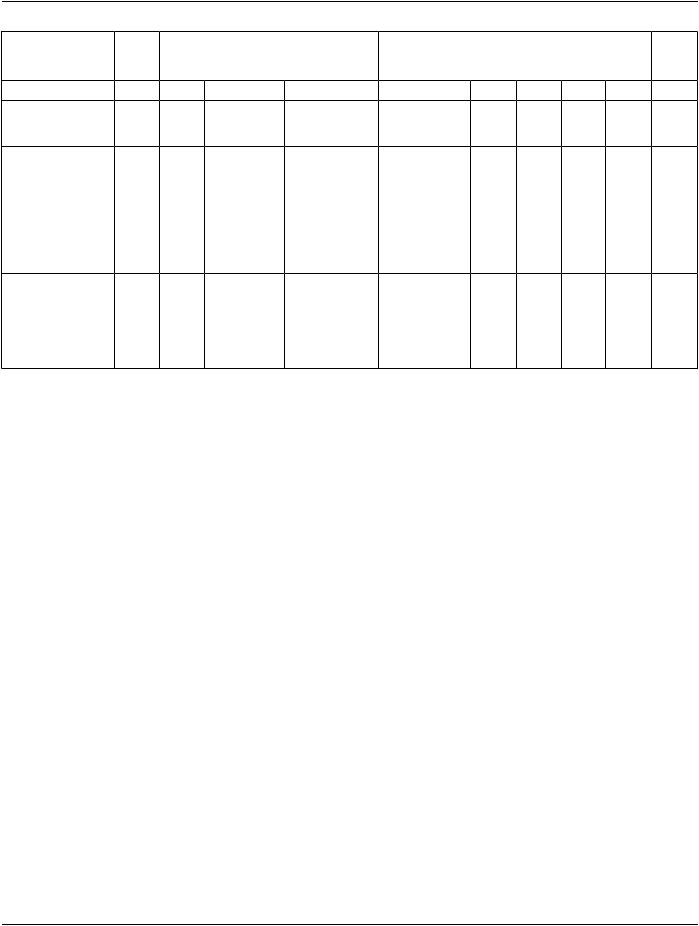
|
DICOM PS3.8 2020a - Network Communication Support for Message Exchange |
Page 45 |
||||
STATES |
No Association establishment |
Data |
Association release (normal & collision) |
Wait |
||
assocn |
transfer |
|
for Tp |
|||
|
|
|
|
|
|
Close |
EVENTS |
Sta1 Sta2 Sta3 Sta4Sta5 |
Sta6 |
Sta7 Sta8 |
Sta9 Sta10Sta11Sta12Sta13 |
||
A-ABORT Request |
AA-1AA-2AA-1 |
AA-1 |
AA-1 AA-1 |
AA-1 AA-1 AA-1 AA-1 |
||
primitive |
Sta13Sta1Sta13 Sta13 Sta13 Sta13 Sta13Sta13Sta13Sta13 |
|||||
|
||||||
A-ABORT PDU |
AA-2 AA-3 |
AA-3 AA-3 |
AA-3 AA-3 AA-3 AA-3 AA-3 AA-3 AA-2 |
|||
(received on open |
Sta1 Sta1 |
Sta1 |
Sta1 |
Sta1 Sta1 |
Sta1 Sta1 Sta1 Sta1 |
Sta1 |
transport |
||||||
connection) |
|
|
|
|
|
|
Transport |
AA-5 AA-4AA-4AA-4 |
AA-4 |
AA-4 AA-4 |
AA-4 AA-4 AA-4 AA-4 AR-5 |
||
connection closed |
Sta1 Sta1 Sta1Sta1 |
Sta1 |
Sta1 Sta1 |
Sta1 Sta1 Sta1 Sta1 |
Sta1 |
|
indication (local |
||||||
transport service) |
|
|
|
|
|
|
ARTIMtimerexpired |
AA-2 |
|
|
|
|
AA-2 |
(Association |
Sta1 |
|
|
|
|
Sta1 |
reject/release timer) |
|
|
|
|
||
Unrecognized or |
AA-1 AA-8 |
AA-8 |
AA-8 |
AA-8 AA-8 |
AA-8 AA-8 AA-8 AA-8 AA-7 |
|
invalidPDUreceived |
Sta13 Sta13 |
Sta13 Sta13 Sta13 Sta13 Sta13Sta13Sta13Sta13 Sta13 |
||||
|
||||||
9.3 DICOM Upper Layer Protocol for TCP/IP Data Units Structure
9.3.1 General
The Protocol Data Units (PDUs) are the message formats exchanged between peer entities within a layer. A PDU shall consist of protocol control information and user data. PDUs are constructed by mandatory fixed fields followed by optional variable fields that contain one or more items and/or sub-items.
Itemsofunrecognizedtypesshallbeignoredandskipped.Itemsshallappearinanincreasingorderoftheiritemtypes.Severalinstances of the same item shall be acceptable or shall not as specified by each item.
The DICOM UL protocol consists of seven Protocol Data Units:
a.A-ASSOCIATE-RQ PDU
b.A-ASSOCIATE-AC PDU
c.A-ASSOCIATE-RJ PDU
d.P-DATA-TF PDU
e.A-RELEASE-RQ PDU
f. A-RELEASE-RP PDU
g.A-ABORT PDU
The encoding of the DICOM UL PDUs is defined as follows (Big Endian byte ordering) :
Note
The Big Endian byte ordering has been chosen for consistency with the OSI and TCP/IP environment. This pertains to the DICOM UL PDU headers only. The encoding of the PDV message fragments is defined by the Transfer Syntax negotiated at association establishment.
a.Each PDU type shall consist of one or more bytes that when represented, are numbered sequentially, with byte 1 being the lowest byte number.
- Standard -

Page 46 |
DICOM PS3.8 2020a - Network Communication Support for Message Exchange |
b.Each byte within the PDU shall consist of eight bits that, when represented, are numbered 7 to 0, where bit 0 is the low order bit. c.When consecutive bytes are used to represent a string of characters, the lowest byte numbers represent the first character. d.When consecutive bytes are used to represent a binary number, the lower byte number has the most significant value. e.The lowest byte number is placed first in the transport service data flow.
f. An overview of the PDUs is shown in Figure 9-1 and Figure 9-2. The detailed structure of each PDU is specified in the following sections.
Note
A number of parameters defined in the UL Service are not reflected in these PDUs (e.g., service parameters, fixed values, values not used by DICOM Application Entities.)
A-ASSOCIATE-RQ PDU/A-ASSOCIATE-AC PDU
|
|
|
|
|
|
|
|
|
|
|
|
|
|
|
|
|
PDU |
|
|
PDU |
Protocol |
|
Called |
|
Calling |
|
|
(Variable Field) |
|
|
|
|
|
|
|
Entity |
|
Entity |
|
|
Contains one or more |
|
|
|
|||
|
Type |
|
|
Length |
Version |
|
|
|
|
|
|
|
|||
|
|
|
|
Title |
|
Title |
|
|
Items shown below |
|
|
|
|||
|
|
|
|
|
|
|
|
|
|
|
|
|
|||
1 |
|
1 |
4 |
2 |
2 |
16 |
16 |
|
32 |
|
|
|
|
||
|
|
|
|
|
|
|
|
|
|
|
|
|
|
|
|
|
|
|
|
|
|
|
|
|
|
|
|
|
|
|
|
|
Application |
|
|
|
|
|
|
|
|
|
|
|
|
|
|
|
Item |
|
Item |
|
|
|
|
|
|
|
|
|
|
||
|
Context |
|
|
|
Application Context Name |
|
(only one) |
|
|
||||||
|
|
Type |
|
Length |
|
|
|
|
|||||||
|
Item |
|
|
|
|
|
|
|
|
|
|
|
|
||
|
|
|
|
|
|
|
|
|
|
|
|
|
|
|
|
|
|
|
1 |
1 |
2 |
|
|
<= 64 |
|
|
|
|
|
|
|
|
Presentation |
|
|
|
|
|
|
|
|
|
|
|
|
|
|
Item |
|
Item |
Pres. |
|
|
Result/ |
|
(Variable Field) |
|
|
|||||
|
Context |
|
|
|
Reason |
|
Contains one or more |
(one or more) |
|||||||
|
Type |
|
Length |
Context ID |
|
|
|
||||||||
|
Item |
|
|
|
(used for AC) |
|
Items shown below |
|
|
||||||
|
|
|
|
|
|
|
|
|
|
||||||
|
|
|
1 |
1 |
2 |
1 |
1 |
1 |
|
1 |
|
|
|
|
|
Abstract |
Item |
|
Item |
|
Syntax |
|
Abstract Syntax |
||
Type |
|
Length |
||
IItem |
|
|
||
|
|
|
|
|
|
1 |
1 |
2 |
<= 64 |
Transfer |
|
|
|
|
Item |
|
Item |
Transfer Syntax |
|
Syntx |
|
|||
Type |
|
Length |
||
Item |
|
|
||
|
|
|
|
|
|
1 |
1 |
2 |
<= 64 |
(only one in RQ) (not present in AC)
(one or more in RQ) (only one in AC)
User |
Item |
|
|
|
Item |
|
|
|
(Variable Field) |
|
|
Info |
|
|
|
|
|
Contains one or more |
(only one) |
||||
Type |
|
|
Length |
|
|
||||||
Item |
|
|
|
|
Items shown below |
|
|
||||
|
|
|
|
|
|
|
|
|
|||
|
1 |
|
1 |
2 |
|
|
|
|
|
|
|
|
|
|
|
|
|
|
|
|
|
|
|
|
Maximum |
|
|
|
|
|
|
|
|
|
|
|
Item |
|
|
|
Item |
|
Max. Length |
|
|
||
|
Length |
|
|
|
|
|
(only one) |
||||
|
Type |
|
|
|
Length |
|
Received |
|
|||
|
Item |
|
|
|
|
|
|
||||
|
|
|
|
|
|
|
|
|
|
||
|
|
|
1 |
1 |
2 |
4 |
|
|
|||
Note: All field sizes in bytes
Figure 9-1. Protocol Data Units Structure and Encoding
- Standard -
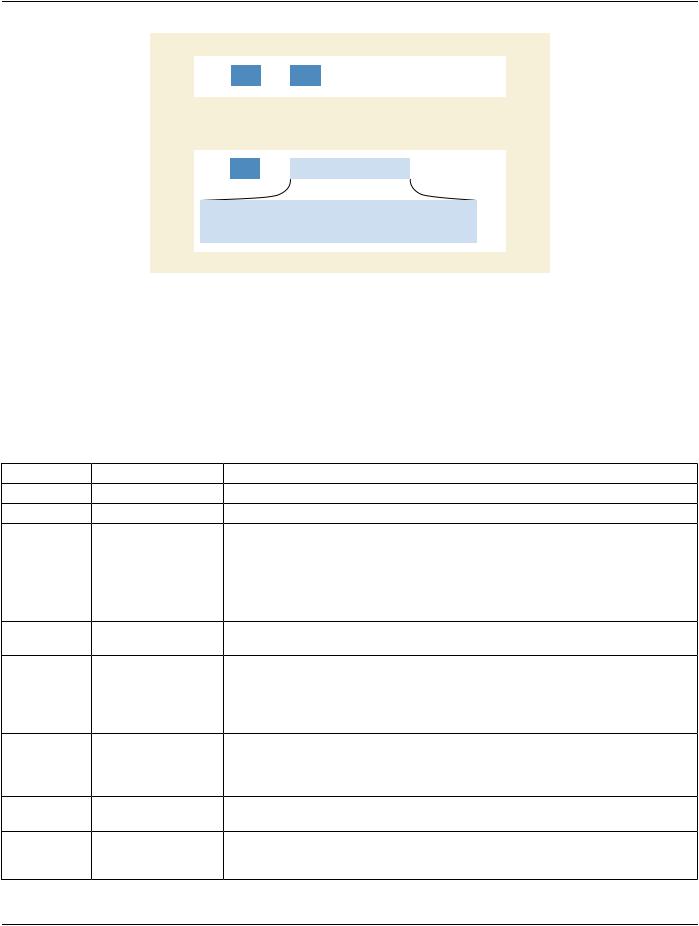
DICOM PS3.8 2020a - Network Communication Support for Message Exchange |
Page 47 |
||||||||||
|
A-ASSOCIATE-RJ PDU/A-RELEASE-RQ PDU/A-RELEASE-RP PDU/A-ABORT PDU |
|
|||||||||
|
|
|
|
|
|
|
|
|
|
|
|
|
|
|
|
|
|
|
|
|
|
|
|
|
|
PDU |
|
PDU |
|
Result * |
Source * |
Reason/ |
|
|
|
|
|
Type |
|
Length |
|
Diag * |
|
|
|
||
|
|
|
|
|
|
|
|
|
|||
|
|
|
|
|
|
|
|
|
|
|
|
|
1 |
1 |
4 |
1 |
1 |
1 |
1 |
|
|
|
|
|
|
|
|
|
|
|
|
|
|
|
|
* Note: Depending on the specific PDU this field may be used or reserved.
P-DATA-TF PDU
|
|
|
|
|
|
|
|
|
|
PDU |
|
PDU |
|
(Variable Field) |
|
|
|
|
|
|
Contains one or more |
|
|
|
||
|
Type |
|
Length |
|
|
|
|
|
|
|
Presentation Data Value Items shown below |
|
|
|
|||
|
|
|
|
|
|
|
||
|
1 |
1 |
4 |
|
|
|
|
|
|
|
|
|
|
|
|
|
|
|
|
|
|
|
|
|
|
|
|
|
|
Item |
Pres. |
Presentation-data-Values (PDV) |
|
|
|
|
|
|
DICOM message |
|
|
|||
|
|
|
Length |
Context ID |
|
|
||
|
|
|
Command or Data Set Information |
|
|
|||
|
|
|
|
|
|
|
||
|
|
|
4 |
1 |
|
|
|
|
|
|
|
|
|
|
|
|
|
|
|
|
|
|
|
|
|
|
Note: All field sizes in bytes
Figure 9-2. Protocol Data Units Structure and Encoding
9.3.2 A-ASSOCIATE-RQ PDU Structure
An A-ASSOCIATE-RQ PDU shall be made of a sequence of mandatory fields followed by a variable length field. Table 9-11 shows the sequence of the mandatory fields.
The variable field shall consist of one Application Context Item, one or more Presentation Context Items, and one User Information Item. Sub-Items shall exist for the Presentation Context and User Information Items.
|
|
Table 9-11. ASSOCIATE-RQ PDU Fields |
PDU bytes |
Field name |
Description of field |
1 |
PDU-type |
01H |
2 |
Reserved |
Thisreservedfieldshallbesentwithavalue00Hbutnottestedtothisvaluewhenreceived. |
3-6 |
PDU-length |
This PDU-length shall be the number of bytes from the first byte of the following field to |
|
|
the last byte of the variable field. It shall be encoded as an unsigned binary number |
7-8 |
Protocol-version |
This two byte field shall use one bit to identify each version of the DICOM UL protocol |
|
|
supported by the calling end-system. This is Version 1 and shall be identified with bit 0 |
|
|
set. A receiver of this PDU implementing only this version of the DICOM UL protocol shall |
|
|
only test that bit 0 is set. |
9-10 |
Reserved |
This reserved field shall be sent with a value 0000H but not tested to this value when |
|
|
received. |
11-26 |
Called-AE-title |
Destination DICOM Application Name. It shall be encoded as 16 characters as defined |
|
|
by the ISO 646:1990-Basic G0 Set with leading and trailing spaces (20H) being |
|
|
non-significant. The value made of 16 spaces (20H) meaning "no Application Name |
|
|
specified" shall not be used. For a complete description of the use of this field, see |
|
|
Section 7.1.1.4. |
27-42 |
Calling-AE-title |
Source DICOM Application Name. It shall be encoded as 16 characters as defined by the |
|
|
ISO 646:1990-Basic G0 Set with leading and trailing spaces (20H) being non-significant. |
|
|
The value made of 16 spaces (20H) meaning "no Application Name specified" shall not |
|
|
be used. For a complete description of the use of this field, see Section 7.1.1.3. |
43-74 |
Reserved |
This reserved field shall be sent with a value 00H for all bytes but not tested to this value |
|
|
when received |
75-xxx |
Variable items |
This variable field shall contain the following items: one Application Context Item, one or |
|
|
morePresentationContextItemsandoneUserInformationItem.Foracompletedescription |
|
|
of the use of these items see Section 7.1.1.2, Section 7.1.1.13, and Section 7.1.1.6. |
- Standard -
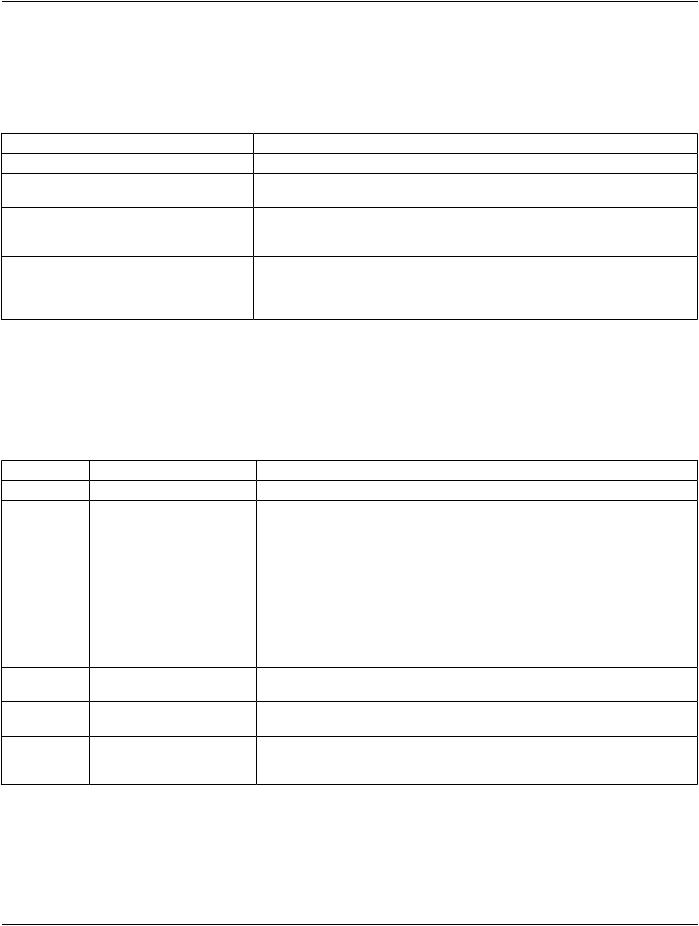
Page 48 |
DICOM PS3.8 2020a - Network Communication Support for Message Exchange |
9.3.2.1 Application Context Item Structure
An Application Context Item shall be made of a sequence of mandatory fields followed by a variable length field. Table 9-12 shows the sequence of the mandatory fields.
Table 9-12. Application Context Item Fields
Item bytes |
Field name |
Description of field |
1 |
Item-type |
10H |
2 |
Reserved |
This reserved field shall be sent with a value 00H but not tested to this value when |
|
|
received. |
3-4 |
Item-length |
This Item-length shall be the number of bytes from the first byte of the following field |
|
|
to the last byte of the Application-context-name field. It shall be encoded as an |
|
|
unsigned binary number. |
5-xxx |
Application-context-name |
A valid Application-context-name shall be encoded as defined in Annex F. For a |
|
|
description of the use of this field see Section 7.1.1.2. Application-context-names |
|
|
are structured as UIDs as defined in PS3.5 (see Annex A for an overview of this |
|
|
concept). DICOM Application-context-names are registered in PS3.7. |
9.3.2.2 Presentation Context Item Structure
The Presentation Context Item shall be made of a sequence of mandatory fixed length fields followed by a variable field. Table 9-13 shows the sequence of the mandatory fields.
The variable field shall consist of one Abstract Syntax Sub-Item followed by one or more Transfer Syntax Sub-Items.
Table 9-13. Presentation Context Item Fields
Item bytes |
Field name |
Description of field |
1 |
Item-type |
20H |
2 |
Reserved |
This reserved field shall be sent with a value 00H but not tested to this value when |
|
|
received. |
3-4 |
Item-length |
This Item-length shall be the number of bytes from the first byte of the following field |
|
|
to the last byte of the last Transfer Syntax Item. It shall be encoded as an unsigned |
|
|
binary number. |
5 |
Presentation-context-ID |
Presentation-context-ID values shall be odd integers between 1 and 255, encoded |
|
|
as an unsigned binary number. For a complete description of the use of this field |
|
|
see Section 7.1.1.13. |
6 |
Reserved |
This reserved field shall be sent with a value 00H but not tested to this value when |
|
|
received. |
7 |
Reserved |
This reserved field shall be sent with a value 00H but not tested to this value when |
|
|
received. |
8 |
Reserved |
This reserved field shall be sent with a value 00H but not tested to this value when |
|
|
received. |
9-xxx |
Abstract/Transfer Syntax |
This variable field shall contain the following sub-items: one Abstract Syntax and |
|
Sub-Items |
oneormoreTransferSyntax(es).Foracompletedescriptionoftheuseandencoding |
|
|
of these sub-items see Section 9.3.2.2.1 and Section 9.3.2.2.2. |
9.3.2.2.1 Abstract Syntax Sub-Item Structure
The Abstract Syntax Sub-Item shall be made of a sequence of mandatory fixed length fields followed by a variable field. Table 9-14 shows the sequence of the mandatory fields.
- Standard -
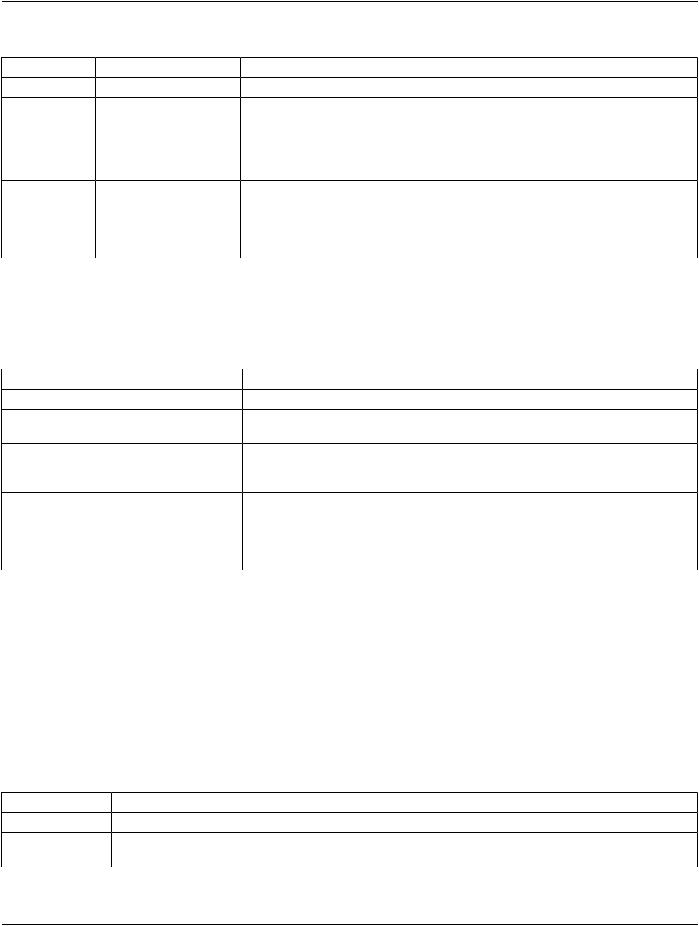
|
DICOM PS3.8 2020a - Network Communication Support for Message Exchange |
Page 49 |
|
|
Table 9-14. Abstract Syntax Sub-Item Fields |
|
|
Item bytes |
Field name |
Description of field |
|
1 |
Item-type |
30H |
|
2 |
Reserved |
This reserved field shall be sent with a value 00H but not tested to this value when |
|
|
|
received. |
|
3-4 |
Item-length |
This Item-length shall be the number of bytes from the first byte of the following field |
|
|
|
to the last byte of the Abstract-syntax-name field. It shall be encoded as an unsigned |
|
|
|
binary number. |
|
5-xxx |
Abstract-syntax-name |
This variable field shall contain the Abstract-syntax-name related to the proposed |
|
|
|
presentation context. A valid Abstract-syntax-name shall be encoded as defined in |
|
|
|
Annex F. For a description of the use of this field see Section 7.1.1.13. |
|
Abstract-syntax-names are structured as UIDs as defined in PS3.5 (see Annex B for an overview of this concept). DICOM Abstract-syntax-names are registered in PS3.4.
9.3.2.2.2 Transfer Syntax Sub-Item Structure
The Transfer Syntax Sub-Item shall be made of a sequence of mandatory fixed length fields followed by a variable field. Table 9-15 shows the sequence of the mandatory fields.
Table 9-15. Transfer Syntax Sub-Item Fields
Item bytes |
Field name |
Description of field |
1 |
Item-type |
40H |
2 |
Reserved |
This reserved field shall be sent with a value 00H but not tested to this value when |
|
|
received. |
3-4 |
Item-length |
This Item-length shall be the number of bytes from the first byte of the following field |
|
|
tothelastbyteoftheTransfer-syntax-namefield(s).Itshallbeencodedasanunsigned |
|
|
binary numbers |
5-xxx |
Transfer-syntax-name(s) ThisvariablefieldshallcontaintheTransfer-syntax-nameproposedforthispresentation |
|
|
|
context. A valid Transfer-syntax-name shall be encoded as defined in Annex F. For a |
|
|
description of the use of this field see Section 7.1.1.13. Transfer-syntax-names are |
structured as UIDs as defined in PS3.5 (see Annex B for an overview of this concept). DICOM Transfer-syntax-names are registered in PS3.5.
9.3.2.3 User Information Item Structure
The User Information Item shall be made of a sequence of mandatory fixed length fields followed by a variable field. Table 9-16 shows the sequence of the mandatory fields.
The variable field shall consist of one or more User-Data Sub-Items.
Note
The User-Data Sub-Items may be present in any order within the User-Information Item. No significance should be placed ontheorderofUser-DataSub-ItemswithintheUserInformationItem.Sendingapplicationsshouldbeawarethatsomeolder applications might expect Sub-Items to be encoded in ascending order of Item-type within the enclosing Item.
Table 9-16. User Information Item Fields
Item bytes |
Field name |
Description of field |
1 |
Item-type |
50H |
2 |
Reserved |
This reserved field shall be sent with a value 00H but not tested to this value when |
|
|
received. |
- Standard -

Page 50 |
DICOM PS3.8 2020a - Network Communication Support for Message Exchange |
|
Item bytes |
Field name |
Description of field |
3-4 |
Item-length |
This Item-length shall be the number of bytes from the first byte of the following |
|
|
field to the last byte of the User-data field(s). It shall be encoded as an unsigned |
|
|
binary number. |
5-xxx |
User-data |
This variable field shall contain User-data sub-items as defined by the DICOM |
|
|
ApplicationEntity.Thestructureandcontentofthesesub-itemsisdefinedinAnnex |
|
|
D. |
9.3.3 A-ASSOCIATE-AC PDU Structure
An A-ASSOCIATE-AC PDU shall be made of a sequence of mandatory fields followed by a variable length field. Table 9-17 shows the sequence of the mandatory fields.
The variable field consist of one Application Context Item, one or more Presentation Context Items, and one User Information Item. Sub-Items shall exist for the Presentation Context and User Information Items.
|
|
Table 9-17. ASSOCIATE-AC PDU Fields |
PDU bytes |
Field name |
Description of field |
1 |
PDU-type |
02H |
2 |
Reserved |
This reserved field shall be sent with a value 00H but not tested to this value when |
|
|
received. |
3-6 |
PDU-length |
This PDU-length shall be the number of bytes from the first byte of the following field to |
|
|
the last byte of the variable field. It shall be encoded as an unsigned binary number. |
7-8 |
Protocol-version |
This two byte field shall use one bit to identify each version of the DICOM UL protocol |
|
|
supported by the calling end-system. This is Version 1 and shall be identified with bit 0 |
|
|
set. A receiver of this PDU implementing only this version of the DICOM UL protocol |
|
|
shall only test that bit 0 is set. |
9-10 |
Reserved |
This reserved field shall be sent with a value 0000H but not tested to this value when |
|
|
received. |
11-26 |
Reserved |
This reserved field shall be sent with a value identical to the value received in the same |
|
|
field of the A-ASSOCIATE-RQ PDU, but its value shall not be tested when received. |
27-42 |
Reserved |
This reserved field shall be sent with a value identical to the value received in the same |
|
|
field of the A-ASSOCIATE-RQ PDU, but its value shall not be tested when received. |
43-74 |
Reserved |
This reserved field shall be sent with a value identical to the value received in the same |
|
|
field of the A-ASSOCIATE-RQ PDU, but its value shall not be tested when received. |
75-xxx |
Variable items |
This variable field shall contain the following items: one Application Context Item, one |
|
|
or more Presentation Context Item(s) and one User Information Item. For a complete |
|
|
description of these items see Section 7.1.1.2, Section 7.1.1.14, and Section 7.1.1.6. |
9.3.3.1 Application Context Item Structure
An Application Context Item shall be made of a sequence of mandatory fields followed by a variable length field. Table 9-12 shows the sequence of mandatory fields.
9.3.3.2 Presentation Context Item Structure
The Presentation Context Item shall be made of a sequence of mandatory fixed length fields followed by a variable field. Table 9-18 shows the sequence of the mandatory fields.
The variable field shall consist of one Transfer Syntax Sub-Item.
- Standard -
